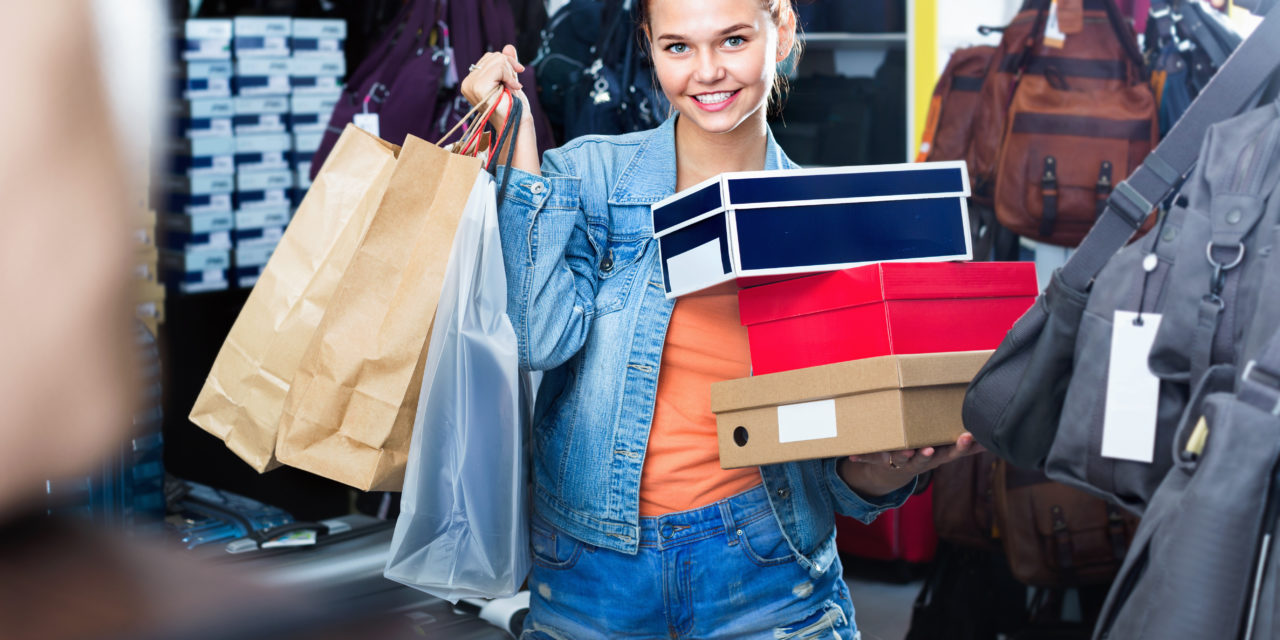Back-to-school shopping patterns signal deeper chasm between winners, losers
Emerging shopping patterns in the back-to-school season underscore changing dynamics within the brick-and-mortar sector, and a widening gap between haves and have-nots.
The brick-and-mortar have-nots? Traditional department stores and clothing retailers. The percentages of both parents and students who plan to shop at either of those channels declined sharply over 2016 levels, according to a Deloitte back-to-college study released this week.
Deloitte surveyed more than 1,000 students and parents each. The percentage of parents who plan to do school shopping in traditional department stores for their college-going kids plunged 17 percentage points to 34%, down from 51% in 2016.
That was the most dramatic decline for either retail format among both age groups, but in all cases the declines exceeded 10 percentage points—a troubling slide in a single year.
 book
bookBy contrast, stores like TJX Cos.’s TJ Maxx, already outperforming in the sector, were cited by many back-to-school shoppers, young and old. Some 31% of parents said they plan to do their back-to-college shopping in off-price stores, up 20 percentage points from a year earlier. Among students, the measure jumped an even larger 28 percentage points to 39%, the Deloitte survey showed.
Fast-fashion players like H&M and Forever 21, which have whittled away the market for traditional specialty clothing retailers such as Abercrombie & Fitch, appear to be grabbing an even bigger share of back-to-school sales. The percentage of students who said they will shop at fast fashion clothing retailers jumped 20 percentage points to 43%.
With consumers’ increased focus on convenience, and with chains like Walgreens making an increased back-to-school push and stocking items like backpacks and other school supplies, drugstores may also have a shot at winning some back-to-school share too: the percentage of college students who said they plan to do back-to-school shopping at drugstores surged 21 percentage points to 36%.
Meanwhile, mass merchants like Walmart and Target were favored by both parents and students. Some 72% of college-going students said they would shop at mass merchants, up 29 percentage points from a year earlier. The percentage of parents mentioning that channel jumped 20 percentage points to 73%.
With advanced marketing technologies comes a slew of data advertisers can use to grab the attention of their consumers at key moments in their path to purchase. This Roundup looks at how personalized messaging delivered at the right time is crucial in today’s fragmented customer journey.
One possible explanation could be found in mass merchants’ aggressive back-to-school advertising spending. While this year’s data isn’t yet available, a Kantar Media study released this week found that Walmart and Target were the top 2 back-to-school advertisers between May 23 and Oct. 2 last year. Why is this relevant? US adults with school age kids 18 or younger are 62% more likely to consider advertising as the most important deciding factor in their buying decision, the study found.
As smartphone penetration rises and schools increasingly become more digital, it looks like electronics retailers also will play a bigger role in where consumers shop this back to school: the percentage of parents who cited shopping at home electronics stores jumped 10 percentage points to 33%, according to the Deloitte survey.
That’s also why non-traditional back-to-school players like AT&T are increasingly flexing their marketing muscle to compete for their share of consumers’ wallet: Kantar Media study found that AT&T upped its back-to-school spending last year eightfold to become the third-largest back-to-school advertiser in 2016, only after Walmart and Target. Meanwhile, Best Buy increased its spending six times, Kantar Media study showed.
The Deloitte finding on where people will shop for college needs generally mirrors the trends observed in a recent survey conducted by Prosper Insights & Analytics for the National Retail Federation.
Among back-to-college shoppers, online was the undisputed winner and the biggest share gainer: 44% of shoppers said they will buy online, up from 37.5% in 2016, the Prosper Insights survey showed. The percentage of shoppers citing electronics stores also rose to 15.5% from 14.3% in 2016, albeit down from a peak of 21% in 2012. Indeed, while gadgets are increasingly coveted, electronics retailers from HHGregg to RadioShack have filed for bankruptcies after failing to compete against the likes of Amazon and bigger physical rivals like Best Buy.
Echoing the Deloitte survey, the Prosper Insights study also found year-over-year percentage declines among consumers doing back-to-college shopping at department stores, office-supplies retailers and clothing stores. In contrast to the Deloitte finding, the percentage of those shopping at discount stores in the Prosper Insights survey painted a less optimistic picture for the segment: it dropped to 40% this year from 43.7% in 2016 and down from nearly 54% in 2011.
by Andria Cheng

